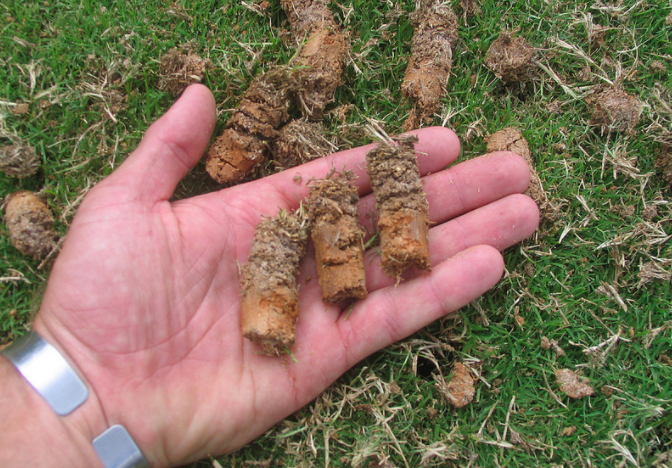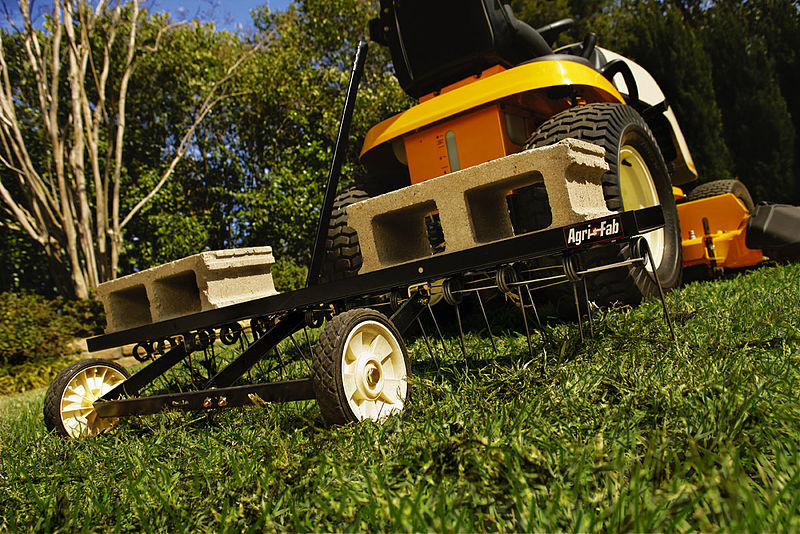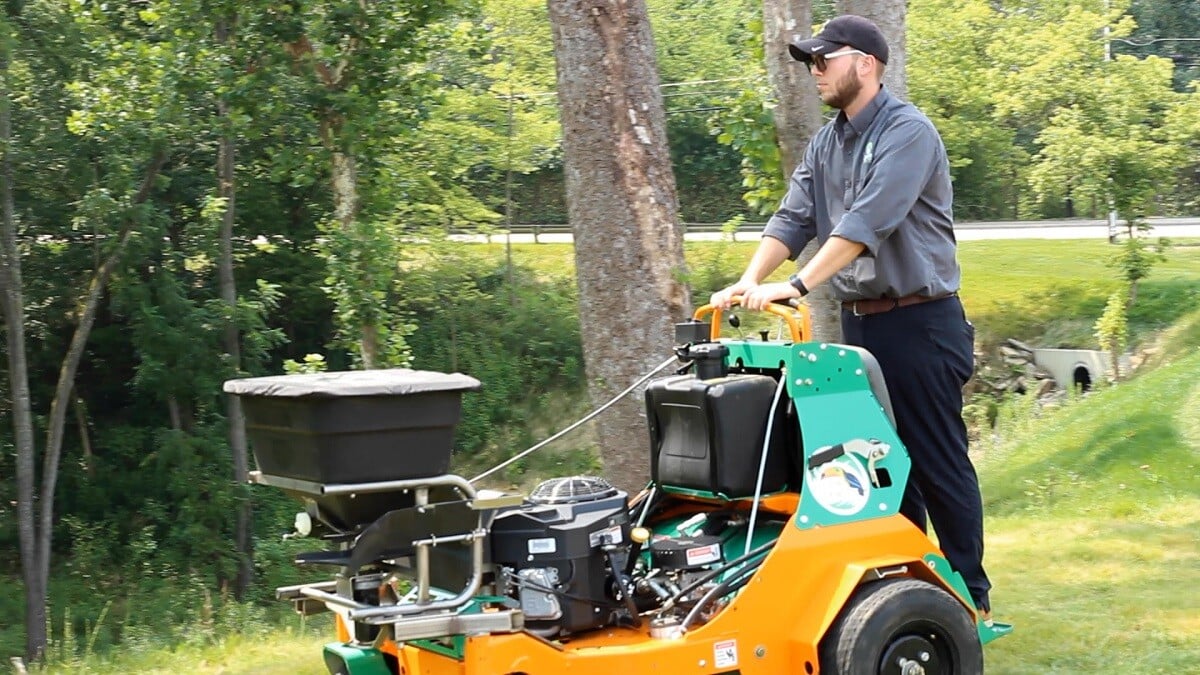You value a nice lawn, but you’re facing challenges when it comes to keeping your lawn looking its best. Whether your lawn isn’t as green as it could be or it seems to be thinning out, you’re frustrated that you can’t pinpoint the issue. You’ve heard of a lawn problem called “thatch” and you’re wondering if that may be a cause behind some of your problems.
You’ve heard of lawn aerating and lawn dethatching services but you’re not sure which is the best approach. Making the best choice for your lawn is imperative so that the solution works.
Lawn thatch isn’t necessarily easy to spot, but you might recognize you have it by the spongy feel to your lawn when you walk across it. You might suspect that you have thatch problem but you’re not quite sure of the best way to go about getting rid of it.
If you’re wondering about dethatching vs. aerating your lawn, and you want to know what’s best, then learning the facts will help you make the best decision. First and foremost, you need to understand exactly what lawn thatch is.
What is Thatch and Why is it a Problem?
Thatch is the organic layer made up of dead and living stems which naturally occurs on the lawn. It builds up between the surface of the soil and the bottom of the grass blades. A little bit of thatch is okay. The trouble starts when a half-inch or more of this layer has collected on your lawn.

Thatch can cause multiple lawn problems. Excess thatch (over 1/2" as shown in this image) may increase the likelihood of pest problems by harboring insect populations. It may also make your lawn more prone to turf disease, because the thatch layer remains moist and dark (an ideal environment for fungus growth).
And because a dense layer of thatch can absorb any application done to the yard, its presence can reduce the effectiveness of various lawn care treatments. For example, your fertilizer or grub control materials won’t do much good if they are caught up in a thick layer of thatch.
Thatch build-up can also impact the overall health of your lawn by making it difficult for oxygen and water to penetrate through its layers into the soil. The key to healthy turf is healthy roots, but roots must first have those elements reach them in order to thrive.
Difference Between Lawn Dethatching and Aerating
During a lawn dethatching service, a piece of equipment called a dethatcher is run through the grass and tears the thatch layer out of the lawn.

The idea is to mechanically extract thatch in order to allow more oxygen, water, and nutrients to reach deep into the soil.
Unfortunately, this equipment can also cause collateral damage when the dethatcher pulls up not only the thatch but a significant amount of healthy grass as well.
Lawn aerating, on the other hand, works in a different manner. The equipment, called a core aerator, used in this process removes small cores of soil (½” wide x 2-3” deep) throughout the lawn.
Aeration helps loosen the soil which in turn permits more oxygen to penetrate down into the root zone.
These improved conditions also allow the abundance of beneficial, naturally occurring microorganisms in the soil helps to decompose the excessive thatch layer at a faster rate.
Lawn dethatching and lawn aerating accomplish the same goal, but a lawn aeration service does so without the possibility of damaging your lawn in the way that a lawn dethatching service would. That’s why dethatching is not considered the best option.
Additional Benefits of Aeration
Beyond its effect on the thatch layer, aeration also provides other advantages to your lawn. Improved soil structure allows for stronger, thicker root growth, the necessary foundation for a healthy lawn. In addition, when an overseeding is performed at the time of the aeration, the process can generate better seed-to-soil contact, giving those seedlings the best possible chance to survive and thrive.
Making Smart Choices for a Healthy Lawn
While there are still some lawn companies that perform dethatching, the weight of the research over the past few decades support that aerating is better than dethatching.
Now that you know aeration is the right choice for your lawn, you may also be weighing DIY aerating vs. a lawn aeration service. Many homeowners discover that hiring a professional is not much more costly than doing it themselves.

Plus, choosing a trustworthy professional service will give you the confidence that the aeration is performed correctly, for the best possible results. That makes the decision to have a professional aeration a smart investment in your lawn’s health.
At Oasis Turf & Tree, we are always available to answer your questions about the best way to get rid of thatch. Given the turf and soil conditions in our region, lawn aeration is not only the most effective way to eliminate thatch, but it is also one of the best things you can do to improve your lawn’s health, and that’s why we recommend aeration as a valuable component of any comprehensive lawn care program.
If you’d like to find out more about our lawn care programs including a lawn aeration service for your Cincinnati, Dayton, Ohio, or Northern Kentucky home, give us a call at 513-697-9090 or contact us for a free estimate.
Image Sources: plugs with thatch, dethatching
